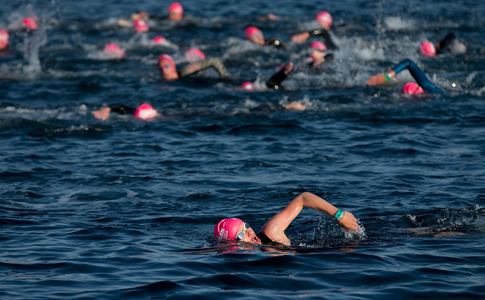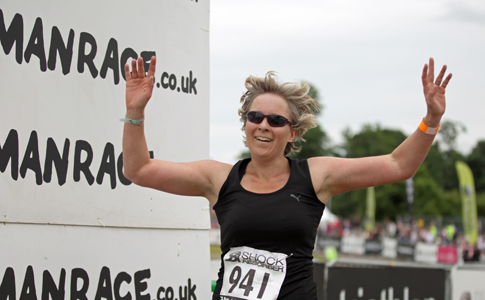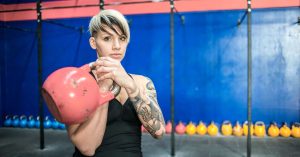Pacing tips for first time triathletes
Pacing yourself for one discipline is hard enough but when trying to do it for 3 it becomes even more challenging. The key is to make sure you think about each discipline individually, understanding your strengths and planning accordingly. Someone very good on a bike can sometimes push to the max, finishing this leg in a strong time, only to suffer in the run and lose all the time they made up. For first time triathletes a good place to start is the sprint distance triathlon. While the distances are shorter, it’s worth bearing in mind that it does not necessarily mean it’s easier as you are generally working at a higher level (sprint) throughout. Different tactics need to be considered for different levels of fitness

Pacing yourself for one discipline is hard enough but when trying to do it for 3 it becomes even more challenging. The key is to make sure you think about each discipline individually, understanding your strengths and planning accordingly. Someone very good on a bike can sometimes push to the max, finishing this leg in a strong time, only to suffer in the run and lose all the time they made up.
For first time triathletes a good place to start is the sprint distance triathlon. While the distances are shorter, it’s worth bearing in mind that it does not necessarily mean it’s easier as you are generally working at a higher level (sprint) throughout.
Different tactics need to be considered for different levels of fitness – individuals doing their first triathlon will have a goal to finish reasonably comfortably, while seasoned racers will be going for their personal best.
Below are some basic tips to think about for first time triathletes:
- Know in advance what realistic time you are hoping to finish in. Know your ability levels well enough to understand what speed you can maintain at the level of discomfort you are willing to endure for each leg.
- Your goal should not be to go for a personal best for each discipline but rather race the pace that will support your best time overall.
- To get an idea of your pace, look at your times during training in the final build up to race day and work out an average across a few sessions, making sure to remove any that were particularly good or bad. Keep this average pace in mind and try and maintain at least this on race day.
- Don’t get distracted about athletes around you- they may be stronger on a particular leg compared to you and you can foolishly push beyond your limits to stay up to speed when you could easily claw back the minutes in the next stage.
- A general rule is to start slightly slower and finish each leg at the maximum threshold achieved during training, ie. end faster than you started.
Breaking it down:
Swim – The first 200 meters of the swim is always the most challenging to restrain yourself from going flat out. The excitement of the start and the number of other swimmers on top of you means you can often start faster than you are able to maintain for the full distance. Start at a level 1 effort. Once people start spreading out a little more, ease into a comfortable pace , level 3-4, working hard but not about to blow up.
Make sure you don’t lose your stroke form. As soon as this starts to go, slow down a little. Counting strokes is a great way to focus your mind on the race and help maintain your form. Try kicking a few extra hard strokes towards the end of the swim to help increase the blood flow to the legs and help with your transitioning.
Bike– a good rule of thumb is to know what maximum output you can manage and maintain a pace that will allow you to do a further 10-15 {c754d8f4a6af077a182a96e5a5e47e38ce50ff83c235579d09299c097124e52d} of the distance comfortably. i.e. you should finish up with enough juice still in the tank. For the first few miles try and get your heart rate down from the transition and settle into a steady rhythm. As soon as you are feeling a little more in control you can start to steadily increase your output to about 85-90{c754d8f4a6af077a182a96e5a5e47e38ce50ff83c235579d09299c097124e52d} effort level. Make sure you are not pushing beyond your lactate threshold. Too much time spent at LT or above on the bike will hurt your run.
Try ensure you also maintain an rpm of 90 (revolutions per minute) making sure you keep adjusting your gears to maintain this level, especially when going up hills. This is much more efficient than using a bigger gear at lower rpm, and prevents more lactate from accumulating. During the last few minutes of your ride, reduce your effort levels lightly to a level 3 and drop a gear or two to help bring heart rate down again and get yourself ready for transition.
The run is last and often the hardest as you are running on already fatigued legs. Pushing too hard initially can make a big difference to your finishing times. Building gradually to race pace in the first 3 to 5 minutes can help you finish faster. A good rule of thumb is to divide your run into 2 parts. Not 50/50 but rather 65/35. Run the first 65{c754d8f4a6af077a182a96e5a5e47e38ce50ff83c235579d09299c097124e52d} at a pace that you know you will be able to pick up on for the second portion, so around 80{c754d8f4a6af077a182a96e5a5e47e38ce50ff83c235579d09299c097124e52d} effort level, allowing you to still have enough in you to finish strong.
As you get closer to the finish line, start increasing your speed evenly over the last 400 to 800 meters with a final all out blast for the finish. End strong and with a smile on your face, ready for the waiting cameras!
Remember each race is different in terms of how you are feeling, weather conditions, venue etc. There are no hard and fast rules that EVERYONE should stick to so use the above as a rough guide and tweak as you go. Learn something from each race and put it into practise for the next one as you continually build on your triathlon successes.
Leigh Rogers is co-owner of Njinga Cycling. Njinga offer structured and progressive cycle skills and training programmes for groups and individuals looking to improve their confidence, endurance and skills on a road bike. www.njingacycling.com
SOURCE: Sportsister – Read entire story here.










